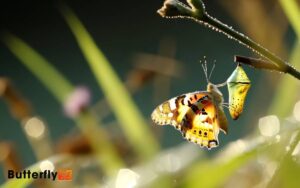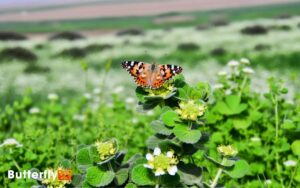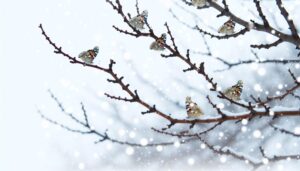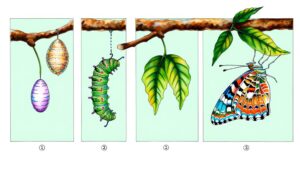Painted Lady Butterfly Arrive in Oregon: Discover Journey!
Each year, the Painted Lady Butterfly migrates from the deserts of Northern Mexico to Oregon, driven by temperature shifts and food availability.
Typically arriving in late spring, these butterflies synchronize with the region’s blooming flora. They navigate using wind currents, solar compass cues, and Earth’s magnetic field.
Painted Ladies exhibit distinct orange, black, and white wing patterns, with sizes ranging from 2 to 2.9 inches. They thrive in temperate climates and prefer habitats with thistles, mallows, and legumes.
Understanding these butterflies’ roles in pollination and ecological impact provides rich insights into their fascinating migration phenomenon.
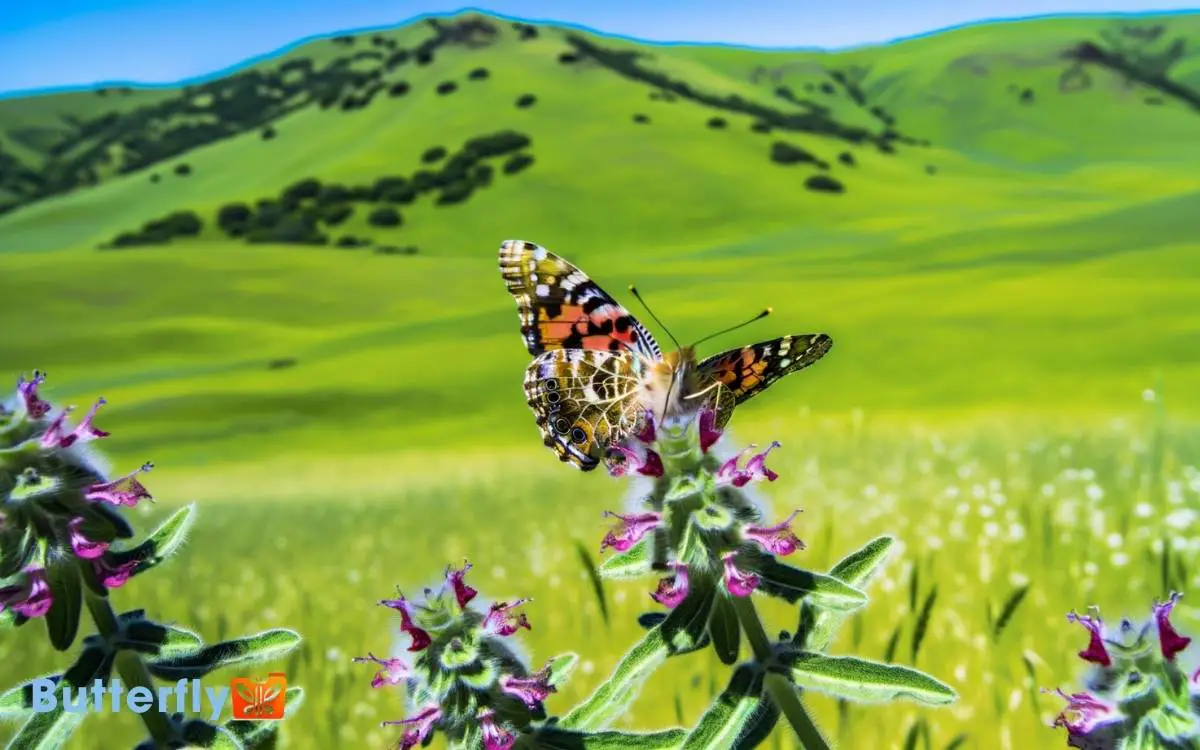
Key Takeaways
Migration Journey
The Painted Lady butterfly‘s migration journey starts in the deserts of Northern Mexico, where they commence an extensive northward trek to reach Oregon. This migration is driven by seasonal changes in temperature and food availability.
Utilizing favorable wind currents, these butterflies can travel up to 100 miles per day. Their navigation relies on a combination of solar compass orientation and possibly Earth’s magnetic field.
During their journey, they undergo several generations, with each new generation continuing the trek northward. The Painted Lady’s diet of nectar from various flowers provides the necessary energy for this arduous migration.
Their resilience and adaptability to diverse climates and habitats underscore the complexity and marvel of their migratory behavior.
Arrival Time
Typically, Painted Lady butterflies reach Oregon in late spring, their arrival meticulously timed with the blooming of local flora. These butterflies, scientifically known as Vanessa cardui, synchronize their migration to coincide with the ideal conditions for nectar availability.
By late May, observers note an influx of these butterflies, a phenomenon driven by temperature patterns and photoperiod changes. The timing guarantees access to abundant resources, essential for their survival and reproduction.
Monitoring data reveals a consistent pattern, with peak arrivals often occurring after significant floral events. This synchrony not only benefits the butterflies but also aids in pollination, enhancing ecosystem dynamics.
Identification Tips
How can one easily distinguish a Painted Lady butterfly from other species fluttering in Oregon?
To begin with, Painted Lady butterflies (Vanessa cardui) exhibit distinct orange, black, and white patterns on their wings. The upper side of their forewings showcases a mix of orange and black with white spots near the tips. The hindwings are primarily orange with rows of black dots.
Another key identifier is their size; they typically span about 2 to 2.9 inches. Additionally, the underside of the wings presents a more muted, intricate pattern of browns and grays, which aids in camouflage.
Their flight is erratic yet swift, contrasting markedly with the slower, more deliberate movements of many other butterfly species in the region.
Habitat Preferences
The Painted Lady butterfly thrives in temperate climates with moderate rainfall, making Oregon an ideal location during their migratory patterns.
They exhibit a preference for host plants such as thistles, mallows, and legumes, which provide essential nutrients for larval development.
Observations indicate that these butterflies adapt well to various habitats, including meadows, gardens, and roadside vegetation.
Preferred Climate Conditions
Painted Lady butterflies thrive in temperate climates with ample access to nectar-rich flowers and host plants for their larvae. These conditions are crucial for their survival and reproduction.
The species prefers environments where temperatures range between 18°C and 25°C, ensuring ideal metabolic and flight activities. Additionally, they gravitate towards regions with moderate humidity, which helps in maintaining hydration and overall health.
| Climate Factor | Preferred Range |
|---|---|
| Temperature | 18°C to 25°C |
| Humidity | Moderate (40%-60%) |
| Precipitation | Low to moderate |
Their migratory patterns are influenced by seasonal changes, seeking out areas where blooming flowers are plentiful. This behavior underscores their reliance on favorable climatic conditions to sustain their feeding and breeding cycles.
Understanding these preferences aids in predicting their migratory paths and potential habitation zones.
Host Plant Choices
Several plant species serve as host plants for Painted Lady butterflies, providing essential nutrients and habitat for their larvae. Thistles (Cirsium spp.) are among the most favored, offering both sustenance and protection.
Additionally, mallow (Malva spp.), hollyhock (Alcea spp.), and sunflower (Helianthus spp.) are commonly utilized. These plants contain essential chemical compounds that support larval development.
Females exhibit oviposition preferences, laying eggs on plant species that maximize larval survival rates.
The butterflies’ habitat selection reflects an intricate balance between availability and suitability of host plants. Observing these preferences in Oregon’s diverse flora highlights the butterflies’ adaptability to local ecosystems.
Understanding such interactions is vital for conservation efforts, ensuring the Painted Lady’s continued presence in the region.
Role in Ecosystem
Contributing to pollination and serving as a food source for predators, the Painted Lady butterfly plays an essential role in maintaining ecological balance. Their involvement in pollination helps sustain various plant species, ensuring biodiversity.
Additionally, they’re an indispensable prey item for birds, spiders, and other insects, supporting the food web.
Key roles include:
- Pollination: Painted Lady butterflies transfer pollen between flowers, aiding in plant reproduction.
- Prey Dynamics: They provide nourishment for numerous predators, promoting predator-prey interactions.
- Plant Health: Larvae feed on host plants, controlling plant populations and preventing overgrowth.
- Migration Impact: Their extensive migrations help distribute genetic material across regions, enhancing genetic diversity.
Understanding these roles underscores their importance in ecosystem functionality.
Conservation Efforts
Recognizing the Painted Lady butterfly‘s significant ecological contributions, conservation efforts focus on habitat preservation and mitigating threats from climate change and pesticides.
Conservationists prioritize maintaining native plant species important for larval and adult stages. They advocate for the reduction of pesticide use, which disrupts butterfly populations and their food sources.
Climate change poses additional risks by altering migratory patterns and reducing availability of suitable habitats. To counter these effects, initiatives include creating butterfly-friendly gardens and promoting agricultural practices that support pollinator health.
Additionally, citizen science projects track population dynamics, providing valuable data for adaptive management strategies.
These collective actions aim to safeguard the long-term survival of the Painted Lady butterfly in its migratory regions, including Oregon.
Viewing Locations
Oregon’s diverse landscapes offer prime viewing locations for observing the Painted Lady butterfly during its migration season. Enthusiasts can spot these vibrant insects in various habitats across the state.
- Columbia River Gorge: This area offers a mix of meadows and forested regions where Painted Ladies feed on nectar from native wildflowers.
- Cascade Range: High-altitude meadows in this mountainous region are hotspots for butterfly activity, providing ample opportunities for sightings.
- Willamette Valley: Here, agricultural lands and gardens create a rich environment for these butterflies to thrive.
- Coastal Dunes: The sandy, flower-covered dunes along the Oregon coast attract Painted Ladies, especially during their peak migration periods.
Each location showcases distinct ecological niches, offering a comprehensive view of the Painted Lady’s migratory patterns.
Historical Sightings
The Painted Lady butterfly has a rich history of sightings in Oregon, with records dating back to the early 20th century documenting their migratory patterns and population fluctuations.
Entomologists have meticulously tracked these Lepidoptera, noting significant population booms in years with ideal climatic conditions.
For instance, in 1924 and 1958, there were remarkable influxes, attributed to favorable temperatures and abundant host plants.
Researchers use these historical data points to understand migration triggers and ecological impacts. Monitoring efforts have revealed cyclical patterns, with peaks often following wet winters that enhance larval food sources.
These historical records are invaluable for predicting future migrations and understanding how climate variability affects Painted Lady populations in Oregon.
Fun Facts
One fascinating aspect of the Painted Lady butterfly is its remarkable ability to migrate over 2,500 miles, showcasing an extraordinary endurance and navigational prowess.
These butterflies exhibit intriguing behaviors and characteristics:
- Global Distribution: Painted Ladies are found on every continent except Antarctica, displaying an impressive adaptability to various climates.
- Rapid Reproduction: A single female can lay up to 500 eggs, contributing to their widespread presence.
- Color Morphology: The intricate patterns on their wings serve as both camouflage and a warning to predators, highlighting their evolutionary advantage.
- Dietary Preferences: As larvae, Painted Ladies feed on over 100 different plant species, indicating a highly versatile diet that supports their survival in diverse environments.
Their resilience and adaptability make them a subject of extensive scientific study.
Conclusion
The painted lady butterfly’s arrival in Oregon is a captivating natural event that highlights their incredible migration journey. These butterflies travel thousands of miles from the deserts of the southwestern United States and Mexico, navigating changing weather conditions along the way. Sightings of painted lady butterflies in Colorado are common during their migration, as they stop to rest and feed on local flowers. Their journey ultimately brings them to Oregon, where they add vibrant color to the landscape.
By observing their habitat preferences and identifying their distinct markings, enthusiasts can better appreciate these pollinators’ essential role in ecosystems.
Conservation efforts remain critical to support their populations. Intriguingly, some scientists theorize that climate change might influence their migration patterns. If true, understanding these effects could be key to ensuring the survival of these remarkable insects.

